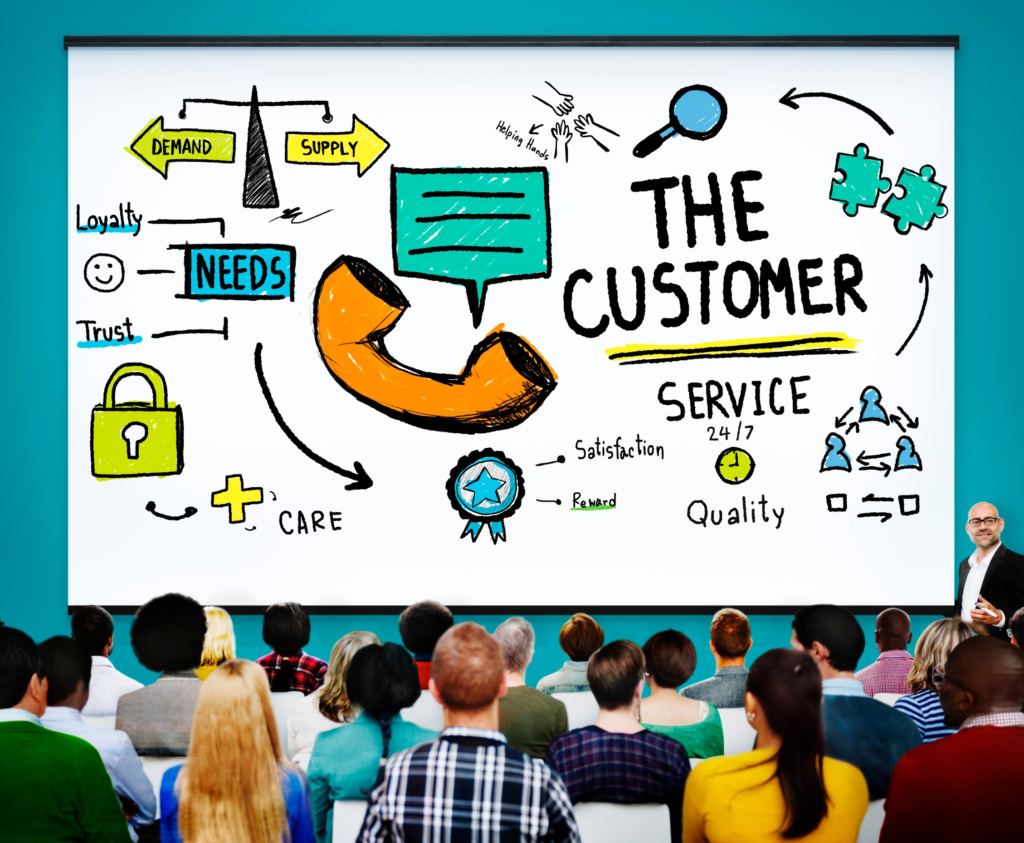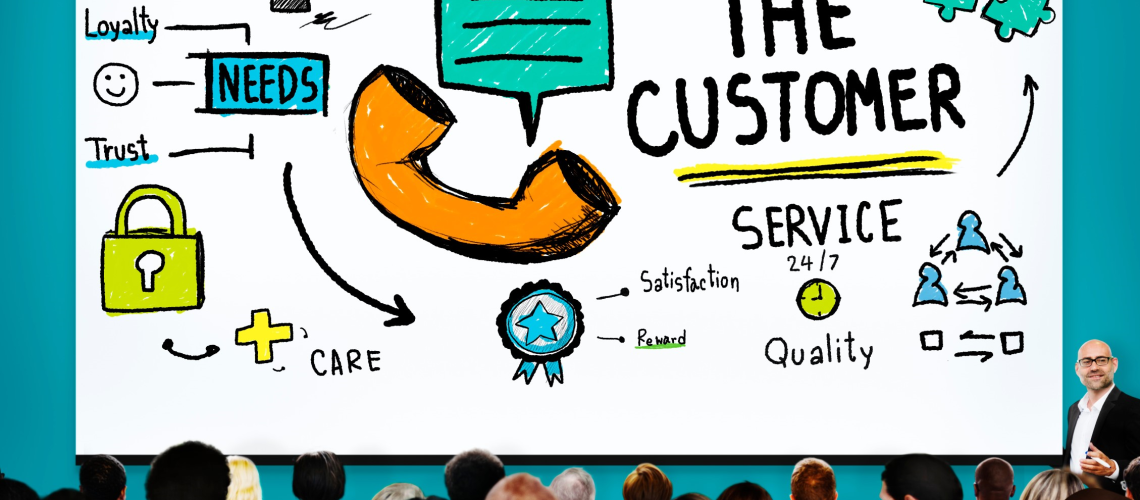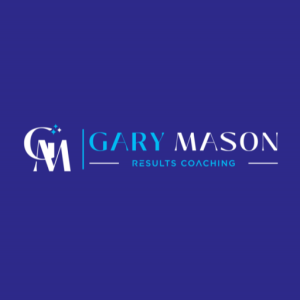This strategy became important to me when I was at Disney World. I saw how much energy and time that Disney puts in making sure we have a great time in the park and again on their cruises. If fact, we had a waiter tell us that they are not allowed to tell the customer “no”. The waiter must figure out how to always make the customer happy. That is when I realized that Disney was keeping track of customer success through “enjoyment.”
In this blog, you will discover proven customer success strategies to improve your business growth. Learn how to enhance customer satisfaction and retention with expert insights.
Customer success is an integral part of any business. It’s more important than ever to keep your customers happy and satisfied with the products and services you provide them with. Achieving customer success can be challenging, especially in today’s fast-paced digital economy. In this post, we’ll look at everything you need to know about achieving customer success and building a solid strategy for your own business.

Creating Personas That Will Help You Understand Your Customers
One of the most important things you can do for your customers is to understand them.
Understanding your customers means knowing who they are and what they want. You need to know their goals, pain points, needs and buying process if you want to help them become successful with your product or service.
To create a good understanding of your customers’ needs and expectations, start by creating “Personas”. Personas are fictional characters who represent real people in your target market. By creating personas based on real data about actual customers (or even potential ones), you’ll be able to better tailor products/services around those specific individuals’ preferences so that everyone gets what they need out of using it!
According to Forrester Research, over 72% of the businesses surveyed say improving customer success is their top priority.
Customer Success: How to Get the Most Value from Your Customers
“Quality in a service or product is not what you put into it. It is what the customer gets out of it.” – Peter Drucker
Customer Success is the most important part of a SaaS business. It’s not just about customer satisfaction, it’s also about your customer’s success with your product.
Customer Success is something that you should think about when starting a SaaS business, because it can make or break your company.
If you don’t have good Customer Success, then you won’t get any referrals or new customers and eventually go out of business. You need to make sure that every customer has access to support resources so they can get help when they need it!

Why helping customers succeed benefits both the business and the customers
- Customer success is a win-win situation for both the business and the customer. Customers get the best experience possible, and you get a loyal customer who will likely make future purchases from your company.
- For example, if you have an ecommerce store selling high-end watches, it’s important that your customers are able to easily find what they’re looking for on your website. If they aren’t able to do so because of confusing navigation or unclear product descriptions (or any other reason), then they might leave without making a purchase–which means less revenue for you as well!
Building a Customer Success Strategy
- Define the problem before starting on a solution.
- Set goals for yourself before you start working on your customer success strategy. It’s important to be ambitious, but also realistic about what you can achieve in 3-6 months.
- Don’t worry about what other people’s goals are–just focus on yours!
- Be specific with your objectives and KPIs (key performance indicators), so that they’re measurable and actionable over time as well as when they’re first set up.
- Create personalized experiences for customers based on their unique needs and preferences, such as creating a custom onboarding plan or sending them relevant content via email newsletter based off their interests or previous interactions with the brand/website/app etcetera…

How To Implement Onboarding & Training
When you’re trying to help your customer be successful, there are a few things you must do. These include onboarding and training. Onboarding is the process of introducing customers to your products or services, while training is how you help them become proficient in using it.
You’ll want to include these steps in the onboarding process:
- Introduce Yourself – Let customers know who they are interacting with and why they should trust that person/company/brand
- Set Expectations for Success – Explain what success looks like for both parties (you and your customer) as well as how long it will take for them to achieve this goal (if applicable).
- Provide Product Training and Resources – If there are any resources available from within or outside of your organization such as online videos or manuals that explain how things work better than words alone can do so make sure they’re included somewhere during this step!
Furthermore, a report by the Customers Success Collective reveals that the majority of companies with established customer success teams experience 40% higher customer satisfaction rates than those without

Communication and Relationship Management
“Make a customer, not a sale.” –Katherine Barchetti
The best way to help your customers be successful is to communicate with them on a regular basis. You should use different channels and methods of communication, depending on the type of customer you’re communicating with.
You can also use customer success as a way to build relationships and trust with your customers–the more they trust you, the more loyal they’ll be! The same goes for proactive communication and problem-solving: if there are any issues that arise in their experience with your product or service (and there will always be things that come up), make sure you address those issues quickly so they don’t become bigger problems later down the line.
Tracking and Measuring Customer Success
Customer success is a long-term strategy. It’s not something that you can measure and track in a few weeks or months, but rather it should be measured throughout the whole customer lifecycle.
Measurement and tracking of customer success include:
- The number of customers using your product or service
- How much they use it
- How much value they derive from it

Case Studies and Success Stories
Case studies are a great way to demonstrate the value of customer success. They should include numbers and metrics, quotes from customers, and be short and to the point.
Upselling and Cross-Selling Techniques That Will Boost Your Profits
Upselling and cross-selling are two of the most effective ways to increase revenue, but they can be difficult for your customers to understand. As a result, you may need to take extra steps in order for them to take advantage of these opportunities.
- Upselling is the process of selling a customer a more expensive product or service than the one they originally intended to purchase; it’s usually used when someone wants something small–for example: buying a coffee at Starbucks instead of just getting water from the fountain machine.
- Cross-selling refers to offering complementary products or services that are similar in nature (e.g., buying milk when you’re buying cheese).
Retention Strategies and Customer Loyalty
“Satisfaction is a rating. Loyalty is a brand.” – Shep Hyken
Customer retention is key. If you want to be successful, your customers need to feel like they’re part of something special. It’s not just about getting them in the door–it’s about making sure they stay and come back again, too.
One way to do this is through upselling and cross-selling: offering other products or services that complement what you already offer your customer base as a way of encouraging additional purchases from them (upselling) or bringing more people into your business (cross-selling). You could also try loyalty programs or referral programs where customers get points for every dollar spent at your store; these points can then be redeemed for discounts on future purchases or given away as prizes like gift cards or free merchandise.
Measurement tools include surveys sent out after every interaction with customers so you know where improvements need to take place; analytics platforms such as Google Analytics which track website traffic; call center software like Salesforce which logs phone calls made by agents working in call centers providing customer support services

“There is place in the world for any business that takes care of its customers – after the sale.” – Harvey MacKay
Leveraging Technology for Customer Success
The first step in leveraging technology for customer success is to know what tools you have at your disposal. Customer success software, chatbots and CRMs are all available to help you automate your customer support processes.
- Customer Success Software: This type of software allows you to track the progress of individual customers through the sales funnel and keep them updated on important information related to their account or subscription plan. It can also be used as a way for customers to communicate with each other (e.g., via private forums), which helps create a sense of community within your company’s ecosystem.
- Customer Success Chatbots: This type of bot uses artificial intelligence algorithms that learn from interactions with human beings so they become more effective over time at providing answers based on specific needs rather than generic responses like those found in FAQ pages or knowledge bases.”
How To Measure The ROI of Your Customer Success Program
To measure the ROI of your customer success program, you need to first define what success means for your organization. For example, how many customers are retained? How many new customers do we acquire? What is our net revenue increase compared to the previous year?
Once you have a clear definition of success, it’s easier to determine how much money has been saved by preventing churn and increasing customer lifetime value (CLV). You can also use this number as an opportunity cost: if we didn’t invest in a CSM team or service line–or whatever else might help retain customers–how much more would we lose in lost revenues because our customers left us?
This exercise helps demonstrate why investing in CSM is worthwhile for any organization that wants long-term growth and profitability. It also provides insight into where additional investments should be made so that everyone stays happy with their experience using your product or service!

Quick Summary
- We hope this article has helped you understand how to help your customers be successful.
- As we’ve seen, customer success is an important part of any business, and it can have a big impact on its success.
- By thinking about what your customers need from you and how they want those needs met (or not), you’ll be able to create a strategy for success that works for both sides.
Claim your Free Discovery Call (Retail Value $150) including a Personalized 90 Day Strategy Plan, visit https://garymasonresultscoaching.com/.


